Abstract
A new candidate hormone--designated peptide YY (PYY)--has been isolated from extracts of porcine upper intestinal tissue by using a novel chemical assay method. This peptide has been detected in the extracts by the presence of its unusual COOH-terminal tyrosine amide structure. The peptide consists of a linear chain of 36 amino acids and its complete amino acid sequence is: Tyr-Pro-Ala-Lys-Pro-Glu-Ala-Pro-Gly-Glu-Asp-Ala-Ser-Pro-Glu-Glu-Leu-Ser-Arg-Tyr -Tyr-Ala-Ser-Leu-Arg-His-Tyr-Leu-Asn-Leu-Val-Thr-Arg-Gln-Arg-Tyr-NH2. This peptide has a distinct sequence homology to the pancreatic polypeptide. It is therefore proposed that PYY and the pancreatic polypeptide together form a new peptide family. PYY has been found to strongly inhibit both secretin- and cholecystokinin-stimulated pancreatic secretion in the anesthetized cat.
Full text
PDF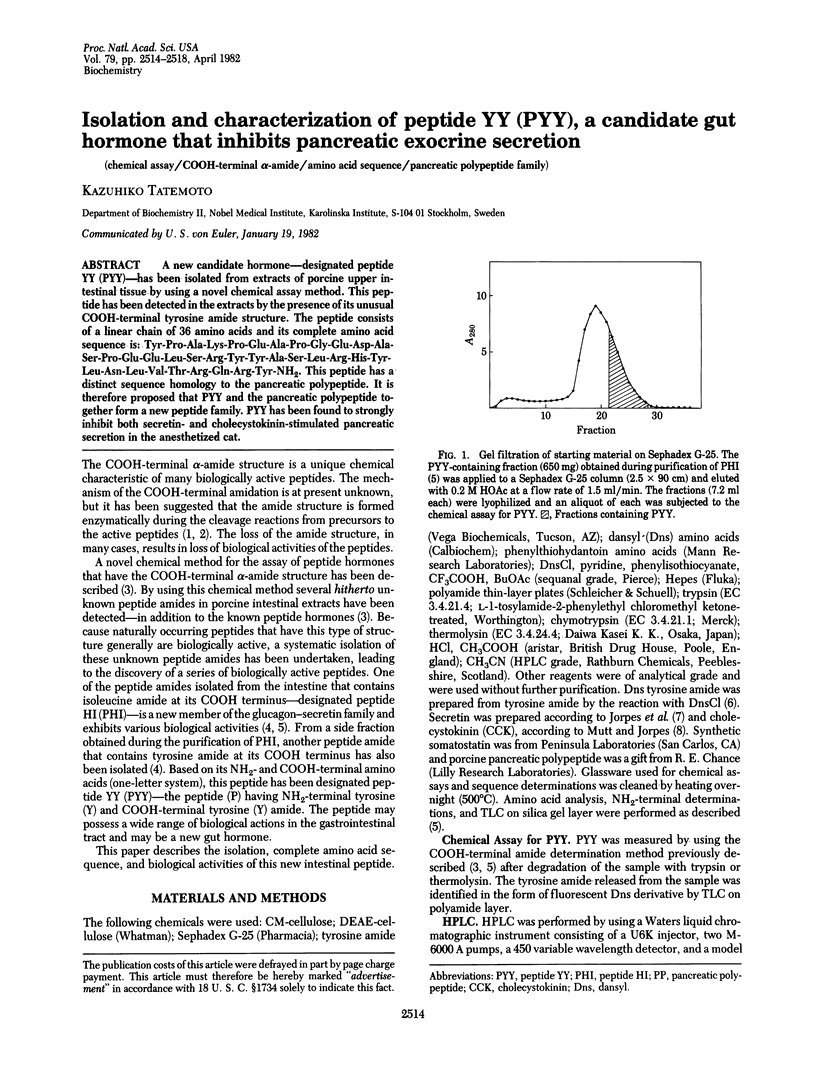
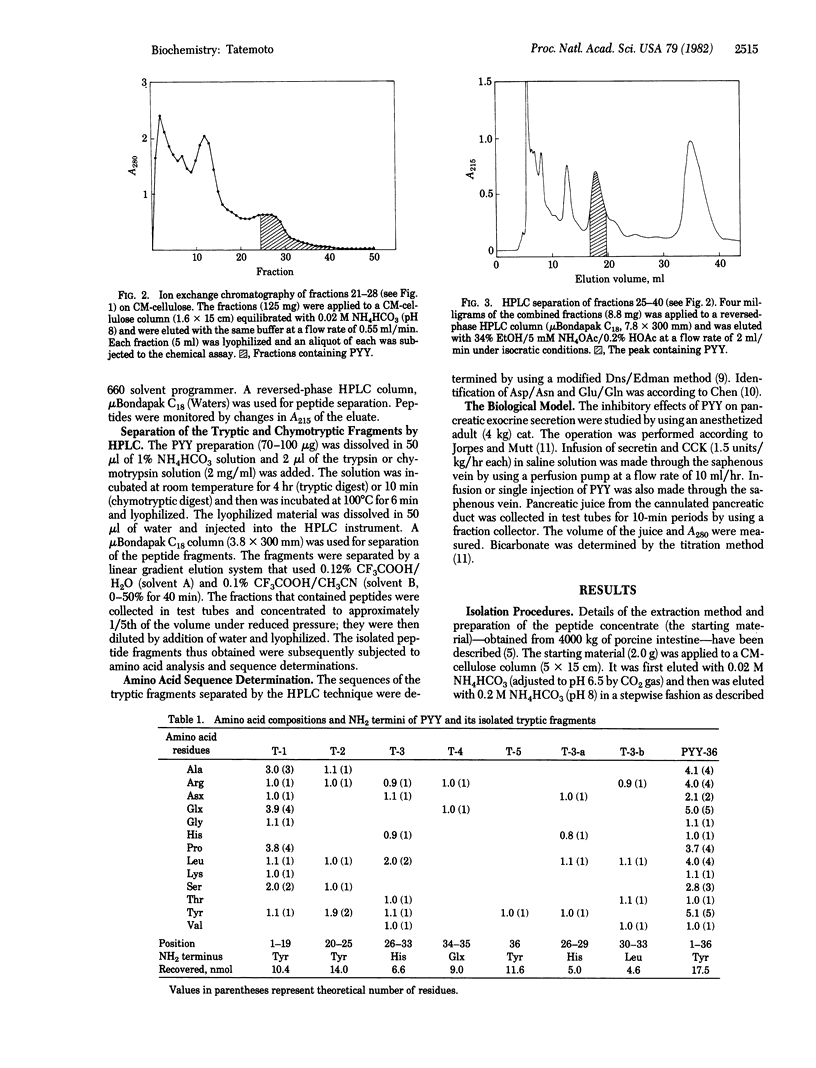
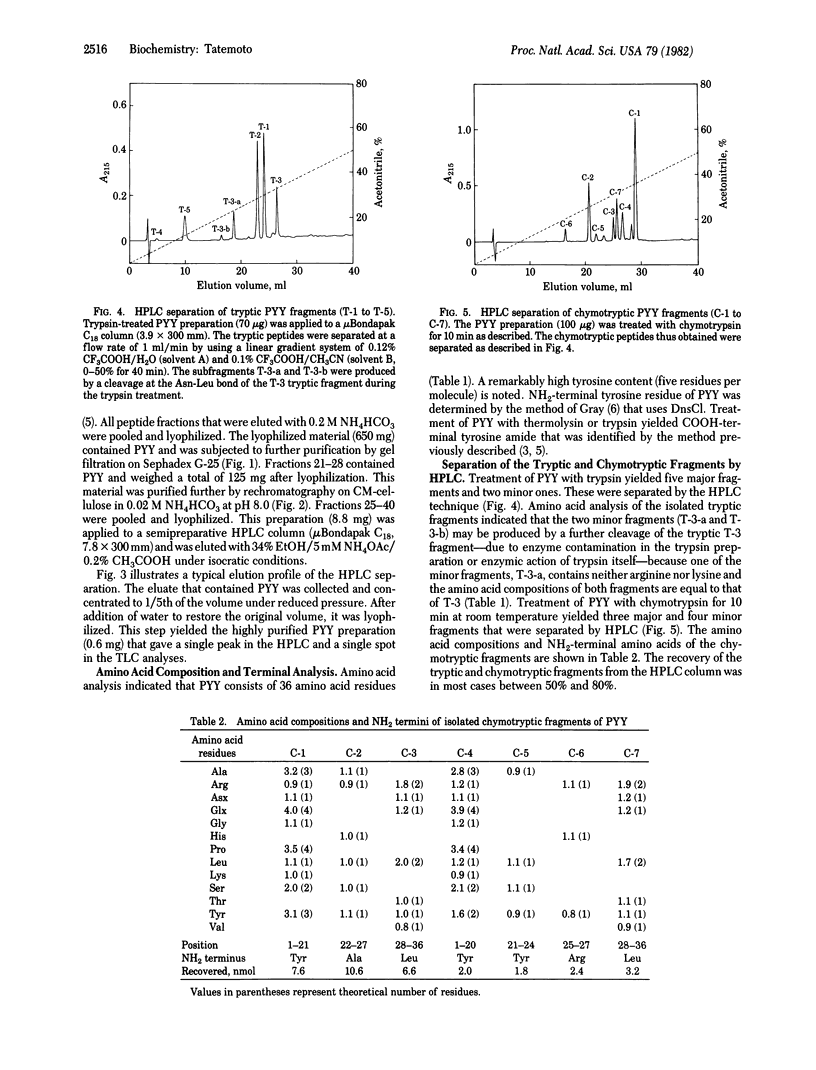
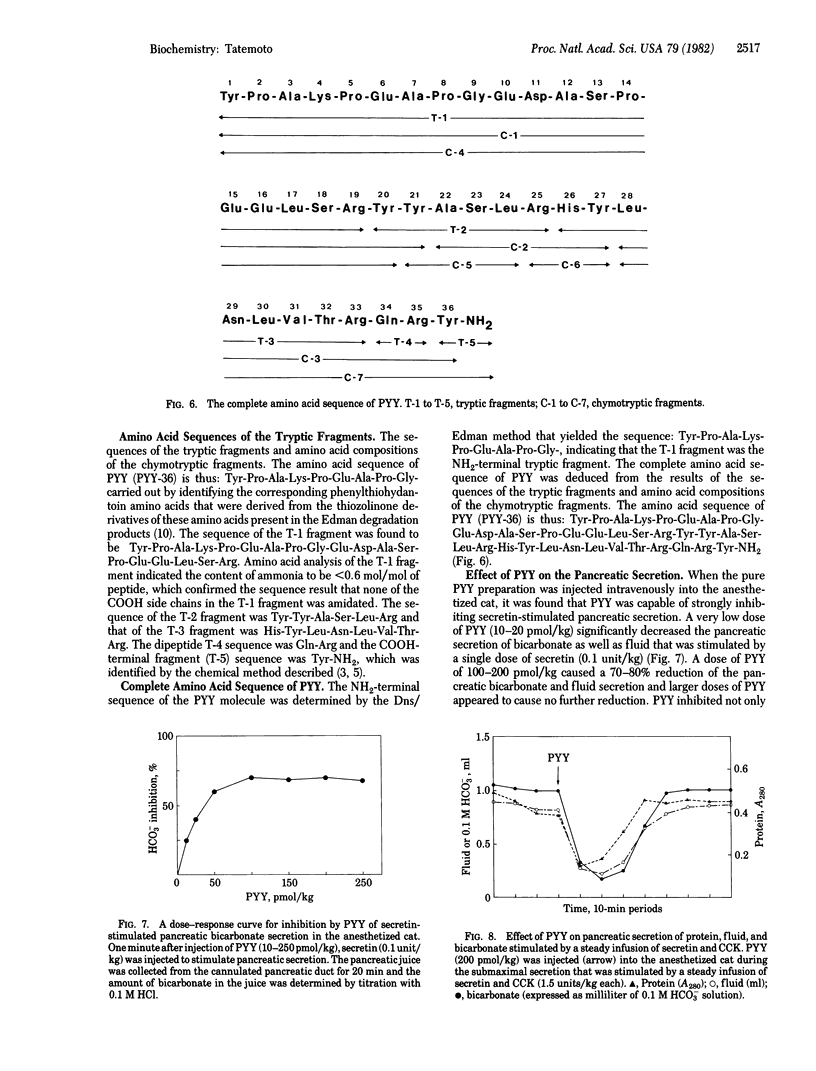
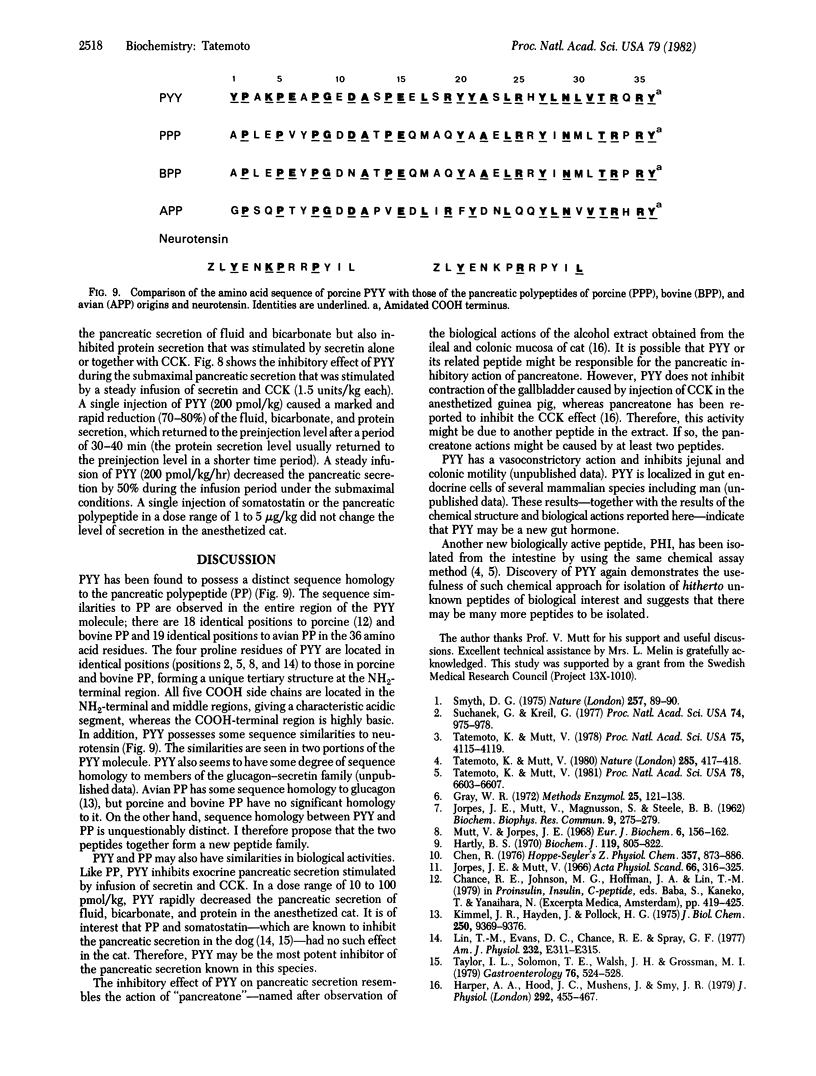
Selected References
These references are in PubMed. This may not be the complete list of references from this article.
- Chen R. The sequence determination of a protein in a micro scale: the sequence analysis of ribosomal protein L34 of Escherichia coli. Hoppe Seylers Z Physiol Chem. 1976 Jun;357(6):873–886. doi: 10.1515/bchm2.1976.357.1.873. [DOI] [PubMed] [Google Scholar]
- Harper A. A., Hood A. J., Mushens J., Smy J. R. Pancreotone, an inhibitor of pancreatic secretion in extracts of ileal and colonic mucosa. J Physiol. 1979 Jul;292:455–467. doi: 10.1113/jphysiol.1979.sp012864. [DOI] [PMC free article] [PubMed] [Google Scholar]
- Hartley B. S. Strategy and tactics in protein chemistry. Biochem J. 1970 Oct;119(5):805–822. doi: 10.1042/bj1190805f. [DOI] [PMC free article] [PubMed] [Google Scholar]
- JORPES J. E., MUTT V., MAGNUSSON S., STEELE B. B. Amino acid composition and N-terminal amino acid sequence of porcine secretin. Biochem Biophys Res Commun. 1962 Oct 17;9:275–279. doi: 10.1016/0006-291x(62)90073-6. [DOI] [PubMed] [Google Scholar]
- Jorpes J. E., Mutt V. On the biological assay of secretin. The reference standard. Acta Physiol Scand. 1966 Mar;66(3):316–325. doi: 10.1111/j.1748-1716.1966.tb03205.x. [DOI] [PubMed] [Google Scholar]
- Kimmel J. R., Hayden L. J., Pollock H. G. Isolation and characterization of a new pancreatic polypeptide hormone. J Biol Chem. 1975 Dec 25;250(24):9369–9376. [PubMed] [Google Scholar]
- Lin T. M., Evans D. C., Chance R. E., Spray G. F. Bovine pancreatic peptide: action on gastric and pancreatic secretion in dogs. Am J Physiol. 1977 Mar;232(3):E311–E315. doi: 10.1152/ajpendo.1977.232.3.E311. [DOI] [PubMed] [Google Scholar]
- Mutt V., Jorpes J. E. Structure of porcine cholecystokinin-pancreozymin. 1. Cleavage with thrombin and with trypsin. Eur J Biochem. 1968 Oct 17;6(1):156–162. doi: 10.1111/j.1432-1033.1968.tb00433.x. [DOI] [PubMed] [Google Scholar]
- Suchanek G., Kreil G. Translation of melittin messenger RNA in vitro yields a product terminating with glutaminylglycine rather than with glutaminamide. Proc Natl Acad Sci U S A. 1977 Mar;74(3):975–978. doi: 10.1073/pnas.74.3.975. [DOI] [PMC free article] [PubMed] [Google Scholar]
- Tatemoto K., Mutt V. Chemical determination of polypeptide hormones. Proc Natl Acad Sci U S A. 1978 Sep;75(9):4115–4119. doi: 10.1073/pnas.75.9.4115. [DOI] [PMC free article] [PubMed] [Google Scholar]
- Tatemoto K., Mutt V. Isolation and characterization of the intestinal peptide porcine PHI (PHI-27), a new member of the glucagon--secretin family. Proc Natl Acad Sci U S A. 1981 Nov;78(11):6603–6607. doi: 10.1073/pnas.78.11.6603. [DOI] [PMC free article] [PubMed] [Google Scholar]
- Tatemoto K., Mutt V. Isolation of two novel candidate hormones using a chemical method for finding naturally occurring polypeptides. Nature. 1980 Jun 5;285(5764):417–418. doi: 10.1038/285417a0. [DOI] [PubMed] [Google Scholar]
- Taylor I. L., Solomon T. E., Walsh J. H., Grossman M. I. Pancreatic polypeptide. Metabolism and effect on pancreatic secretion in dogs. Gastroenterology. 1979 Mar;76(3):524–528. [PubMed] [Google Scholar]


